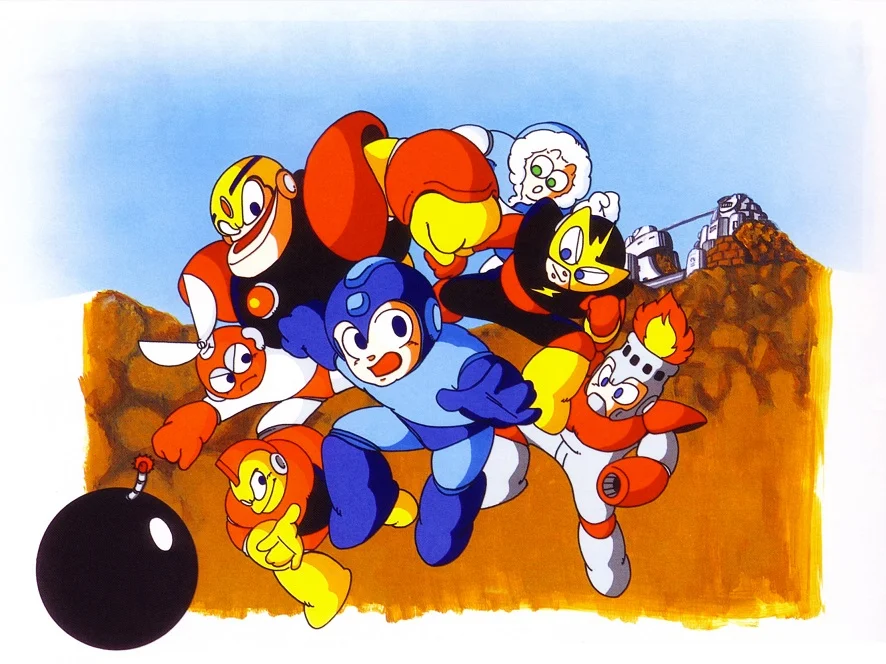Harlan Ellison was my favorite author. He died last year and all these months later, I'm still finding myself reflecting on his body of work in my downtime. He left behind an unbelievable amount of text: 1,700 short stories, 70+ books, dozens of essays (film and television criticism), a few comic book stories, 10 or so published screenplays/teleplays and at least 2 edited anthologies to his name. I've been a fan of his for 15 years now and I'm still discovering new gems of his. I find the man and his writing endlessly fascinating.
Ellison was noted for his contributions to the field of Speculative Fiction, particularly in the New Wave Movement of the 1960's and 1970's. For those who don't know, New Wave literature was a product of 60's counterculture. It mercilessly defied convention. It relied less on world-building or being scientifically accurate. It mocked and deconstructed pulp fiction stories and the idea of the protagonist who relies on the wonders of science or his own machismo to solve his problems.
Ellison detested being labeled as a "Science Fiction writer/author" (he thought this was condescending and pigeon holed him and would prefer if people called him a "writer", a "storyteller" or, occasionally a "fantasist". He would sometimes refer to his fiction stories as "surreal fantasies". Though Ellison wrote many books, he wasn't exactly what you would call a "novelist". In his nearly 70 year career, he wrote less than 10 novels; none of them are particularly long. I have the first printing of "Mefisto in Onyx" which is less a novel and more a novella; it checks in at 91 pages.
Ellison was famously grumpy, outspoken, energetic and opinionated. He was highly critical of pop sci-fi, Star Wars, Star Trek and Lord of the Rings. He disliked what he considered an over-emphasis on continuity, serialization and world-building. He disliked “lore dumps”, high fantasy and trilogies. In fact, the only narrative cycle that he wrote that I can think of was "A Boy and His Dog".
“...I see all of these people write trilogies and quadrilogies and volumes five, six, seven, eight, I can’t help but think ‘are not these authors not re-chewing their own cud too many times?’ So, I try to hit the gong right the first time. And that’s why the short story.”
He, in turn, was a master of the short story format. Some of his stories are 14 pages long, some of them are 20, some of them are barely a page ("Escapegoat", “Ecowareness” and "The Lingering Scent of Woodsmoke"). Plenty of his stories had little to no revision beyond their first draft. Some of his stories were written in a matter of days or hours. Some are less a story and more of a narrative poem ("The Creation of Water" and "The Dreams a Nightmare Dreams"). In a few pages, Ellison created entire universes. He considered each story to create its own world, it would only have it go on for as long as he deemed necessary and then he would move on to something completely different for his next story. He had no recurring characters, but would often revisit several themes: mockery/deconstruction of fantasy and b-grade science fiction tropes, a distrust of computers/emerging technologies, nuclear war horrors/nuclear holocaust, genocide, World War III (“A Boy and His Dog” mentions World War IV, even!) , the final destruction of humanity, a dislike of racism/xenophobia, erotica, fear, grief, deities, childhood nostalgia, and other topics.
His command of language was highly literate, oftentimes ironic, sometimes horrifying, sometimes erotic... and a lot of it was rip-roaring hilarious. For instance, his story "How's the Night Life on Cissalda?" (pronounced Kiss-el-da) is about how the human race is destroyed by horny, telepathic, extra-dimensional aliens. The destruction of humanity is the most depressing topic I can think of. In “Cissalda”, Ellison turns it into a nasty joke and somehow it’s not a total downer.
From my experiences, I consider the best known works of his to be "I Have no Mouth and I Must Scream" (Originally published in 1967), " 'Repent Harlequin!', said the Ticktockman", the episodes of The Outer Limits “Soldier” and “Demon with a Glass Hand” and the original screenplay to the famous Star Trek episode “City on the Edge of Forever” (keep in mind it was heavily re-written by Gene Roddenberry from Ellison’s original draft.). “I Have No Mouth” and “Ticktockman” have been reprinted an uncountable number of times, have been translated into many tongues and are often required reading in high school and colleges.
If you're not familiar with it, "I Have no Mouth and I Must Scream" features perhaps the bleakest of all speculative fiction scenarios. It's a post-apocalyptic story about the last bastion of humanity: the final 5 poor schmoes who are trapped inside a massive subterranean complex run by a Godlike computer called AM (“am" as in, "I think, therefore I am" not ‘a-m’). AM has amazing powers: he can alter people's physiology, he's seemingly able to prolong the character's lives, he can create horrible monsters and summon storms, teleport both objects and living beings, conjure illusions and probe people's minds. He's seemingly omnipotent and all-powerful. Originally a war machine, he destroyed most of the human race in World War III and now serves no other function than to torture the main characters: Benny, Ted, Gorrister, Nimdock and Ellen.
In 6000 words, Ellison made a fully fledged world that said a lot about the dangers emerging technology, weapons of mass destruction, paranoia and raises big questions like "Are we a slave to machines?", What if a machine thought it was God?", "Is God real?", "Is God a machine?", "Is He benevolent?", "Is He malevolent?", "How does humanity function after doomsday?", "Is our existence meaningful or hallow?" These are rock-hard questions with no easy answers!
So let's flash-forward to the 90's. The good folks at Cyberdreams and The Dreamer's Guild recruited magazine writer David Mullich/ Apple II game producer David Sears to get Ellison involved in the process of making a video game. It seems like a nigh-impossible task. To say that he was not a gamer was a massive understatement. Ellison was a notorious technophobe. The man didn't even own a PC! He derided all electronic games as "computer games" (yes, even arcade and console games) or as "combat games" and thought they were anti-intellectual, desensitized people to violence and ultimately a waste of time. How could they get a non-gamer who had disdain for the industry to design a video game?
“I wanted the game to be unwinnable. David Sears responded ‘Harlan, that would frustrate players!’ to which I said ‘a noble endeavor.’”
“I created it so you could not win it. The only way in which you could ‘win’ was to play it nobly. The more nobly you played it, the closer to succeeding you would come, but you could not actually beat it. And that annoyed the hell out of people too.”
Ellison had initially proposed that they intentionally create a game in which the player could not possibly win in order to make a meta-statement about the futility of playing video games. Thankfully, once Sears posed some questions to Ellison about "I Have No Mouth" they were able to make a breakthrough in the process of writing the design document:
“Why were these people saved? Why did AM decide to save them?”
From that, Ellison and Sears were able to greatly expand upon the classic story. After months and months, Mullich was able to produce the final design document based on Ellison and Sears' first draft. From that point forward, graphics and music were created, and voice overs were recorded with Ellison himself playing the sinister computer AM and clearly relishing every second of his character.
With some insight on the author and development out of the way, tuned for Part 2 where-in I delve into the nitty gritty of the finished game....


























